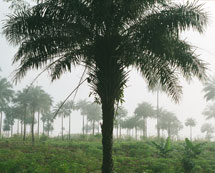 |
Guinea ’s official name became The Republic of Guinea, after gaining its independence from France on October 2, 1958 . With Guinea’s move to become independent came consequences. The French withdrew all aid, and the administrative infrastructure was destroyed ( Maher, 1849). Ashmed Skeou Toure then became its president. “Skeou Toure, formally a prominent trade unionist, pursued vigorous policies of social revolution” (Maher, 1849). Foreign governments later became suspicious Skeou Toure was planning on overthrowing his own regiment, so in 1970, an invasion by Portuguese troops and Guinean exiles initiated the execution of many of those suspected of involvement. “By 1983 almost two million Guineans were estimated to have fled the country” ( Maher, 1849).
In 1980 Sekou Toure was re-elected for his fourth seven-year term. Soon after, however, Sekou Toure died while undergoing surgery in the US . Within weeks—before another president could be elected—armed forces seized power. The legislature was dissolved and the Constitution was suspended. Lansana Conte, commander of the Boke region became president. Although Conte began implementing radical economic reforms in 1985, banned all street demonstrations by 1993, and contributed to much political unrest, he continued to be re-elected and was still in office as of 2002.
The death of Sekou Tore marked a tremendous turning point in Guinea political history. Under Conte’s leadership a new constitution was adopted in 1990, which finally allowed opposing political parties to form, and guaranteed the liberties, duties and rights of citizens. The new constitution also restricted the maximum time a president could spend in office to two five-year terms, and powers of the state into judiciary and executive ( Arulpragasam & Sahn, 14).

http://www.usaid.gov/gn/nrm/background/